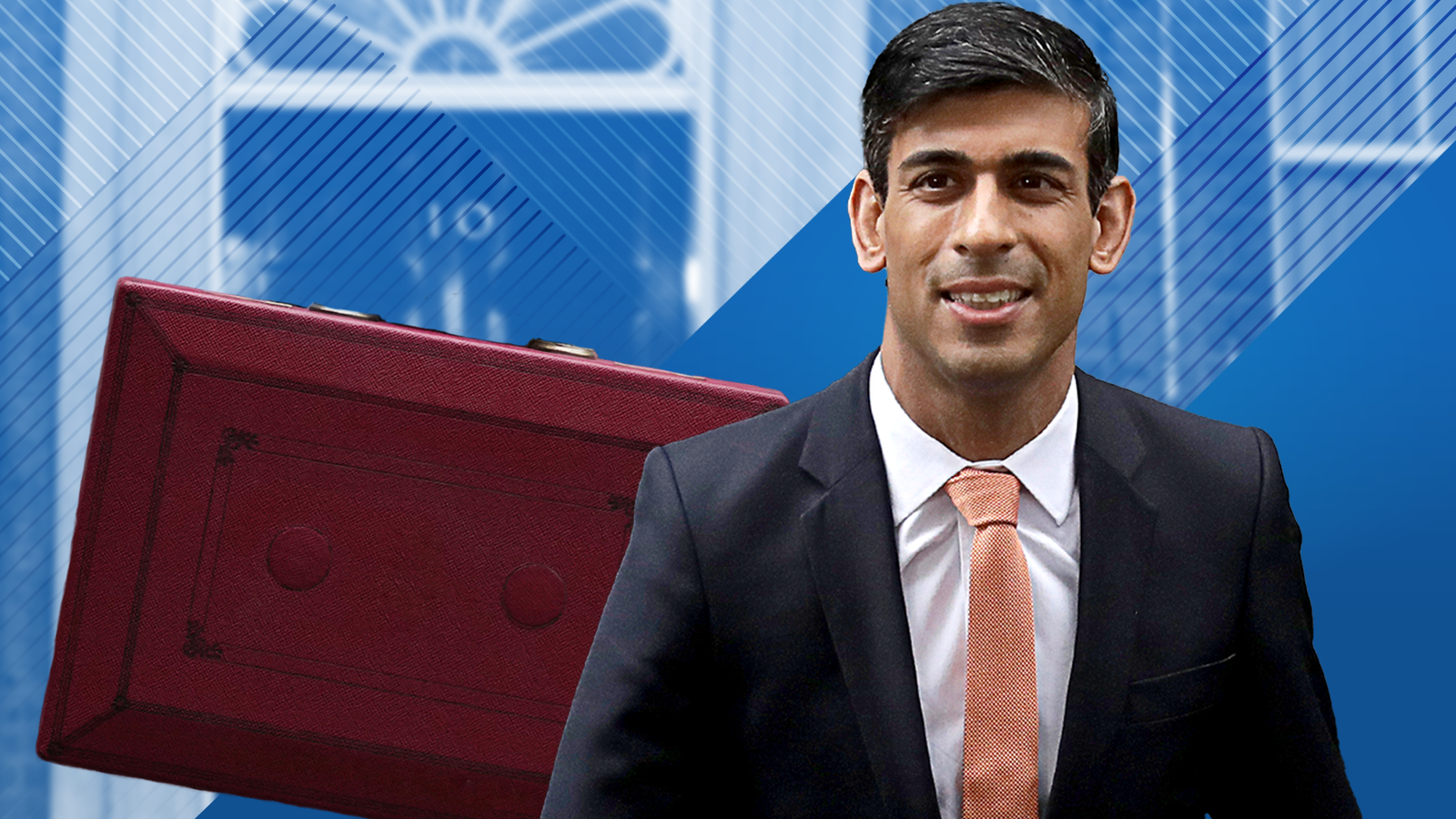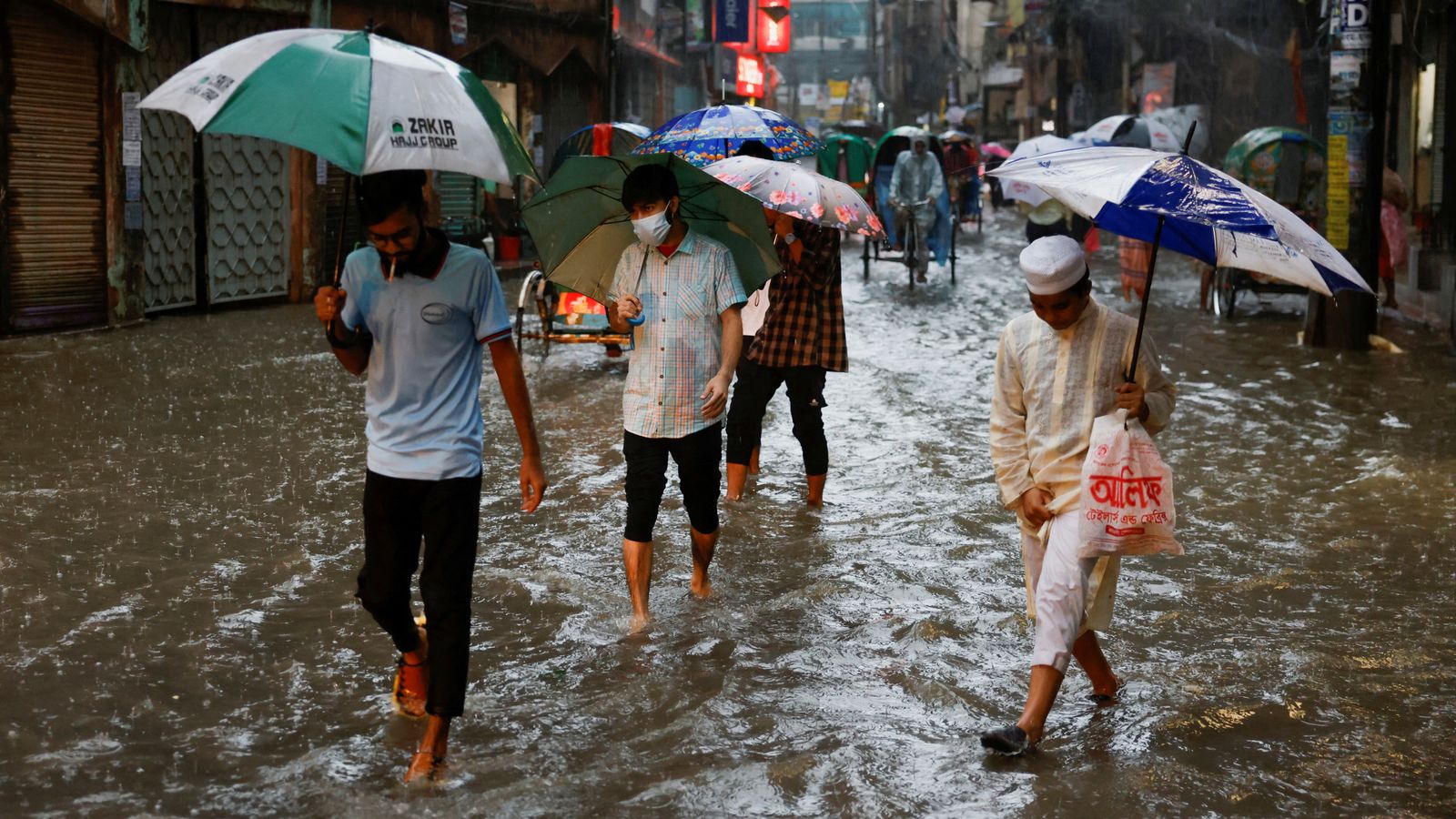After 49 days of Liz Truss as prime minister saw the financial markets plummet and Westminster spiral into crisis, there is huge pressure on her successor to be up to the job.
Rishi Sunak received widespread praise for his time as chancellor, notably for the furlough and business support schemes during COVID.
Rees-Mogg resigns ahead of Sunak cabinet appointments; politics latest
But despite having held the second most senior job in government, Mr Sunak still has a lot to prove.
Not only is he the youngest prime minister the UK has had in 200 years, he has only been an MP since 2015. By comparison, his US counterpart Joe Biden held political office for 48 years before becoming president.
Here, Sky News looks at the many responsibilities the prime minister has – and what they do on a daily basis.
Please use Chrome browser for a more accessible video player
How is being prime minister different from a minister?
While secretaries and ministers of state just have one government department to run, the prime minister effectively presides over all of them.
They do this with the help of the Cabinet Office, which is in charge of the civil service.
Rishi Sunak served as chancellor – the head of the Treasury and public finances – for two years.
Dr Catherine Haddon, senior fellow at the Institute for Government, says: “The step up to being prime minister is huge.
“They need to be across huge swathes of government policy – not just domestic, but also security and foreign policy.”
Read more:
Five challenges for the new PM
Who is Sunak? The first British Asian prime minister
The PM is also responsible for resolving disputes between different government departments – on policy and how much funding they get – and various members of the cabinet.
“They need to be able to deal with the huge onslaught of difficult and very disparate decisions crossing their desk daily, balancing the conflicting priorities of different policy areas, constantly manage and massage the egos of the cabinet and quell upset in their ranks of MPs,” Dr Haddon adds.
In this way, as well as making huge policy decisions, they act as a chief negotiator.
“Number 10’s success lives and dies on the competency of the prime minister to run a team well,” according to Dr Haddon.
“It is the hardest test for any politician and few leave the job without regrets.”
Please use Chrome browser for a more accessible video player
First week
After being asked to form a government by the King and congratulated in phone calls with foreign leaders, the prime minister will have several operational matters to consider straight away.
Where to live
The prime minister has two official residences – Number 10 Downing Street and a country retreat at Chequers in Buckinghamshire.
As they live and work in Downing Street, different prime ministers have chosen different parts of the estate to stay with their family.
Boris Johnson lived in the flat above Number 11 Downing Street and faced a backlash over the funding of its renovation.
Margaret Thatcher chose to have her office above Number 10, while Gordon Brown opted for the larger, open-plan space at Number 12.
Briefings
With so many roles and responsibilities, the PM will need to be briefed on all of them as soon as he enters office.
The main ones are from the Cabinet Secretary and the head of the intelligence and security services.
The decision on scenarios such as using the UK’s nuclear deterrent, going to war, and shooting down a hijacked plane all rest with the prime minister – so he has to be briefed on what those procedures entail.
Cabinet
The cabinet is made up of key secretaries of state and representatives from the Cabinet Office.
Prime ministers can decide how involved they want the cabinet to be in decision-making and how many cabinet committees they chair themselves.
The main offices of state – chancellor, home secretary and foreign secretary – are decided on the first day, with other cabinet positions and more junior ministers appointed within the first few days.
Other appointments
The PM’s main support comes from the civil service (non-political staff who work for each government department) and their political advisers.
Among the civil service appointments they have to make are the ones that run their private office and those in the Cabinet Office.
Key political jobs the PM has to decide on include their chief of staff and director of communications – two created by Tony Blair in 1997 – the head of policy unit, political secretary and constituency secretary.
Budget?
One of the first issues in any new prime minister’s in-tray is whether a new budget is required for the new administration.
In Mr Sunak’s case, he has kept Jeremy Hunt as chancellor, who has already committed to Liz Truss’s promise of a “medium term fiscal plan” on 31 October.
Urgent decisions
When Liz Truss entered Number 10 she faced pressure to reduce people’s energy bills before the new price cap came into effect on 1 October.
This saw her intervene with her and Kwasi Kwarteng’s energy price guarantee and “mini-budget”, which included numerous tax cuts and U-turns of Boris Johnson’s policies.
After most of it was scrapped, Mr Sunak and Mr Hunt will have to decide what to act on straight away.
Regular meetings
As well as chairing cabinet once a week, and the cabinet committees he decides to take charge of, the prime minister also needs to establish his priorities.
This includes who he wants to meet with on a regular basis.
David Cameron, for example, had weekly one-to-one meetings with his chancellor George Osborne when he was PM from 2010 to 2016.
Weekly diary
The prime minister’s diary is packed full of commitments, often requiring them to start the working day in the early hours.
Each morning they will have a meeting with senior Number 10 staff, the Cabinet Secretary and one or two ministers involved in the main government business of the day.
Tuesday evenings and Wednesday mornings are dominated by preparing for Prime Minister’s Questions at midday on Wednesday.
They remain an MP, so also have to find time to dedicate to their constituency.
Historically, PMs have only spent one day back in their constituency a month, although Theresa May often visited on Saturdays as well.
With the monarch constitutionally still head of state, prime ministers have weekly audiences with them.
They will regularly meet foreign leaders and dignitaries and make room in their diary for other ceremonial duties – such as attending remembrance services or the funerals of heads of state.
Being interviewed by the print and broadcast media also takes up a large chunk of prime ministerial time.
The Red Box
Being across the work of each and every government department is a huge task.
To manage that workflow, the prime minister gets documents put into a red box every evening and weekend for him to read.
What goes into the box is decided by the Number 10 office – on the basis of the PM’s personal preferences – and is how different departments get his attention.
The papers could be a simple briefing, a major policy decision, or a bid for the PM to appear in the media to discuss a particular topic.
When government departments disagree on things or there is a conflict of interest, it’s often the job of the PM to intervene and resolve it.
When things get serious, the PM can decide to escalate something to “crisis level”, which sets the government’s emergency mechanisms into motion – such as a meeting of the COBRA committee.
How much do they get paid?
Prime ministers keep their MP salary of £84,144 – and add to that a prime ministerial salary of £79,936, totalling £164,080.
Once they leave office, former prime ministers are entitled to claim a £115,000 annual allowance for carrying out ceremonial duties as former leaders.










